
Für eine deutsche Übersetzung dieser Seite einfach die Brandenburger Flagge anklicken
 |
Click the Brandenburg Flag for a German translation Für eine deutsche Übersetzung dieser Seite einfach die Brandenburger Flagge anklicken |


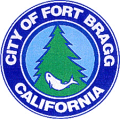 |
Home TownsFort Bragg, California |
 |

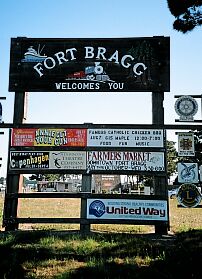
|
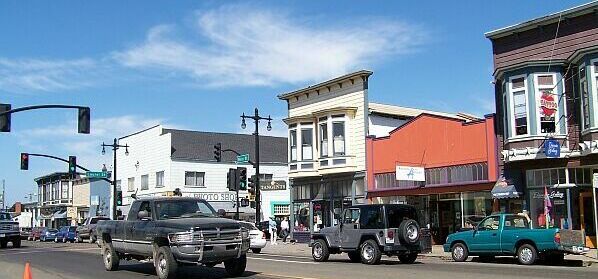
|

| Fort Bragg, where Judy spent a number of years from when she was six until she was 14, only has 7,000 inhabitants, but for Northern California, that is a big city – the largest settlement along the coast between San Francisco and Eureka. Until 2004, Fort Bragg was the proud owner of the only traffic light on Highway One north of the Golden Gate Bridge. |

 |
Fort Bragg's modern history started with a small Army outpost in 1857. For a more detailed history of the area, click the Dream Catcher to get to our Mendocino County History page. |

|


The
Fort was in use only for seven years. In September 1864, at the height of the civil War, many Northern
Californian Army units were ordered south. The troops serving at the Fort Bragg garrison left on the steamer
Panama on October 19, 1864 and arrived at the Presidio of San Francisco the next day. The troops never returned
and the area was opened for development just a few years later. Today, only one building and the name remain.

XXXXXXXXXXXXXXXXXXCommissary Building on North Franklin Streeet; |

|


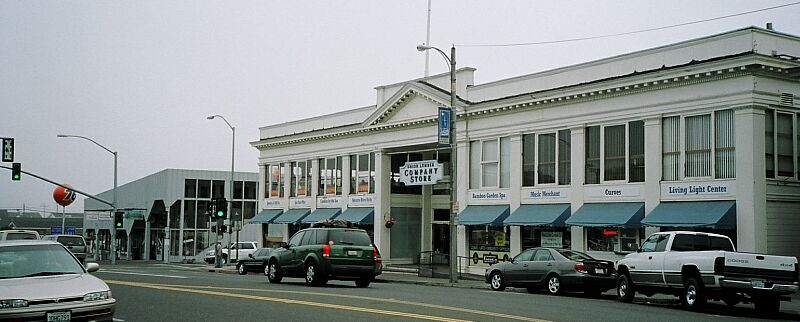
Center of the town is the old Company Store, now a shopping mall. Inside are hundreds of pictures illustrating Fort Bragg's history. |

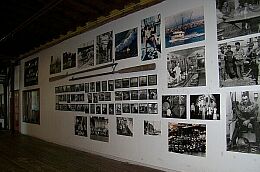 |
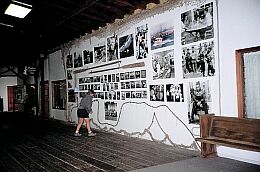 |
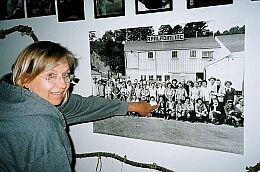
|
| Picture gallery in the Company Store | Judy, checking out the pictures | Judy discovers a family member! |

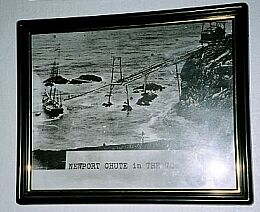 |
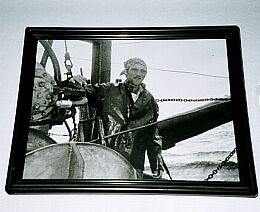 |
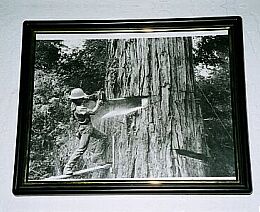
|
| Loading logs on a ship by chute, 1870 | Chute operator | Logger |



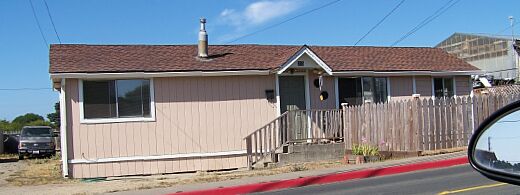 |
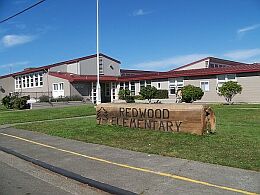
|
| Only a few blocks away from the center is a tiny pink house. This is where Judy spent eight years together with her parents and four siblings. And just a little bit further up the hill is the school they all went to. |


And there is still more to Fort Bragg. Click the right-turn signals below to get to two local tourist attractions.

 |
XXXXXXXXXXXTake a right turn here to get to Fort Bragg's famous Glass Beach. |
 |
 |
XXXXXXXXXXXOr take a right turn here to ride the even more famous Skunk Train. |
 |


 Back to Home Towns |
 Back to California Page |
 Back to English Main Page |
 Back to Start Page |